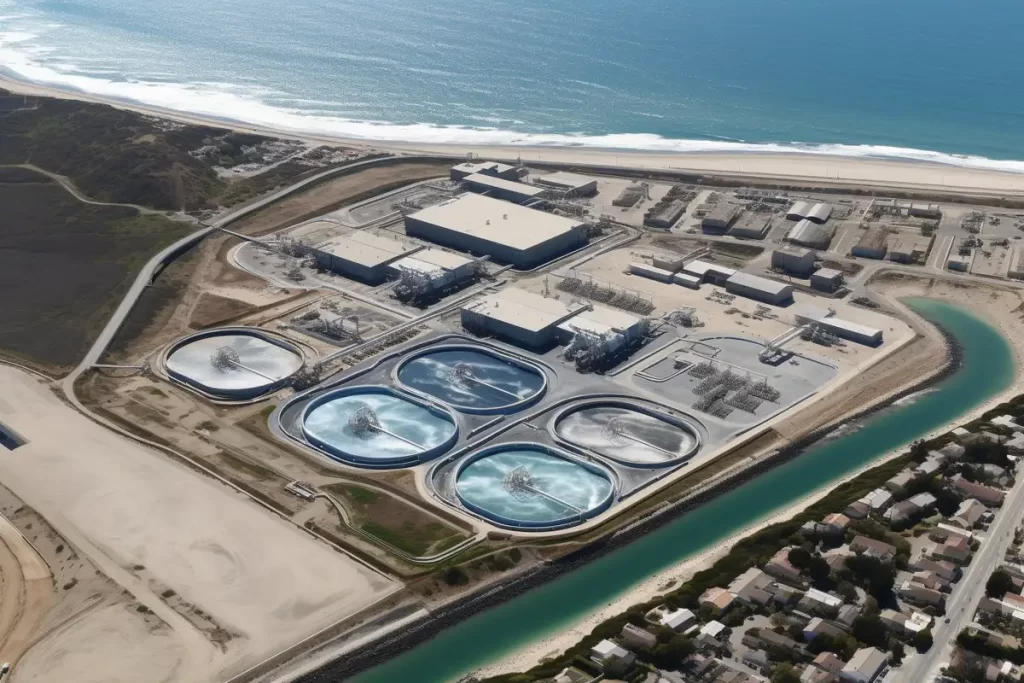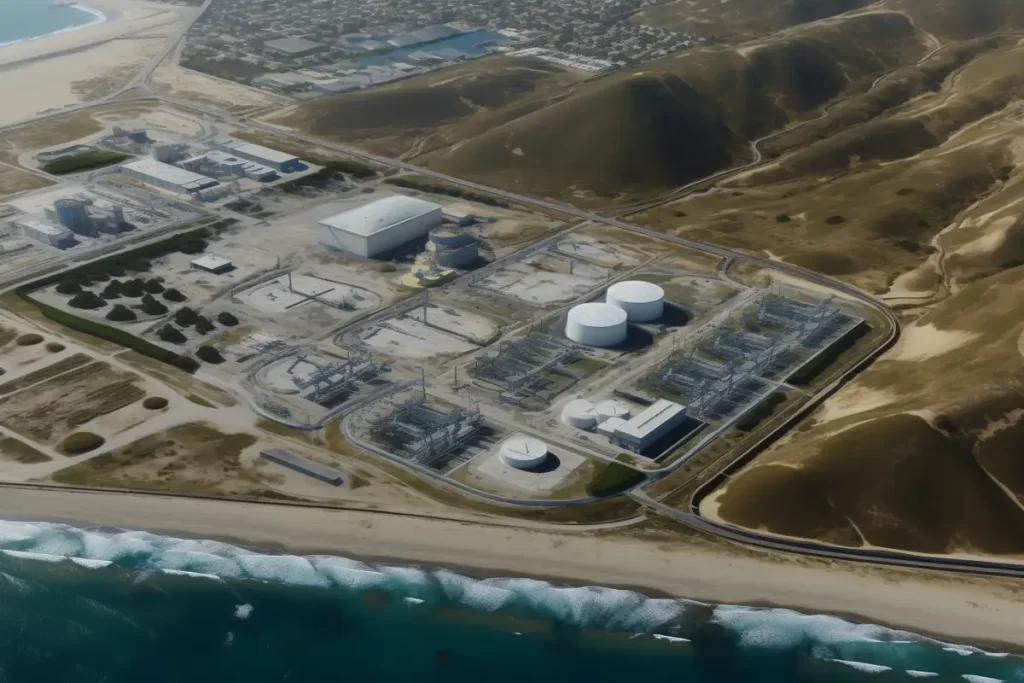Imagine living near the ocean, surrounded by water, but not a single drop of it is safe to drink. Sounds ironic, right? Well, that’s the reality for many people living in coastal regions around the world. Access to clean, drinkable water is a challenge, but what if there’s a way to harness the sun’s energy to turn saltwater into freshwater? That’s where solar desalination comes in! In this article, we’ll take an in-depth look at how solar desalination works, its benefits, and some real-life examples of this innovative technology in action.
Solar desalination works by using solar energy to heat saltwater, causing it to evaporate and separate from the salt and other impurities. The resulting fresh water vapor is then condensed and collected for use.
This article will walk you through the basics of solar desalination, discuss different methods used, highlight its benefits and challenges, and explore some fascinating real-life examples.
The Science Behind Solar Desalination
Sunlight plays a crucial role in solar desalination, as it provides the energy needed for the evaporation and condensation process. When sunlight hits the saltwater, it causes the water to evaporate, leaving the salt and other impurities behind [1]. The water vapor then condenses on a cool surface, forming freshwater droplets that can be collected and used.
The Desalination Process
Desalination is the process of removing salt and other impurities from seawater. There are several methods for desalinating water, such as reverse osmosis, electrodialysis, and distillation [2]. In solar desalination, the sun’s energy is used to power these processes, making it a sustainable and environmentally friendly option [3].
Solar Energy: The Key Ingredient
Solar energy is the primary driver of solar desalination. It can be harnessed through solar thermal collectors, which convert sunlight into heat, or photovoltaic (PV) cells, which convert sunlight into electricity [4]. Both methods can be used to power desalination processes, though the specific method employed depends on the design and requirements of the system.
The Importance of Sunlight
Sunlight is a clean, abundant, and renewable source of energy that makes solar desalination a sustainable solution to water scarcity. By using solar energy, we can significantly reduce our reliance on fossil fuels and lower greenhouse gas emissions.
Evaporation and Condensation Process
The evaporation and condensation process in solar desalination mimics the natural water cycle. By taking advantage of this natural phenomenon, we can create clean, freshwater without the need for harmful chemicals or energy-intensive processes.

Different Types of Solar Desalination Systems
There are several solar desalination systems available, each with its own unique approach to harnessing solar energy for water purification. Some of the most common systems include solar stills, humidification-dehumidification (HDH) systems, and membrane distillation (MD) systems.
Solar Thermal Desalination
Solar thermal desalination relies on the heat generated by solar thermal collectors to evaporate seawater. This process leaves behind the salt and impurities, resulting in freshwater vapor that can be condensed back into liquid form.
Multi-Effect Distillation (MED)
In multi-effect distillation, seawater is evaporated multiple times in a sequence of connected chambers [5]. Each chamber operates at a lower pressure than the previous one, causing the water to evaporate at progressively lower temperatures. The heat from the previous chamber is used to warm the seawater in the next chamber, improving energy efficiency.
Solar Stills
A solar still is a simple, low-tech device that uses sunlight to evaporate water in a closed container [6]. The water vapor condenses on the container’s cool surface, leaving behind impurities. Solar stills are often used in small-scale and emergency situations due to their simplicity and low cost.
Humidification-Dehumidification (HDH) Systems
HDH systems use a series of heat exchangers to transfer solar energy to saltwater, causing it to evaporate [7]. The water vapor is then passed through a dehumidifier, where it condenses into freshwater. HDH systems are more efficient than solar stills, but they are also more complex and expensive.
Membrane Distillation (MD) Systems
MD systems use a microporous membrane to separate water vapor from saltwater. As solar energy heats the saltwater, water vapor passes through the membrane, leaving salt and other impurities behind. The vapor then condenses into freshwater on the other side of the membrane. MD systems offer high salt rejection rates and can be used to treat a wide range of water sources [8].
Solar-Powered Reverse Osmosis (RO)
Solar-powered reverse osmosis uses PV cells to generate electricity, which powers a high-pressure pump that forces seawater through a semipermeable membrane. The membrane allows water molecules to pass through but blocks salt and other impurities, resulting in freshwater on the other side.
Pros and Cons of Solar Desalination
Solar desalination offers numerous benefits, but it also comes with its own set of challenges. Let’s take a closer look at the pros and cons of this technology.
Environmental Benefits
One of the most significant advantages of solar desalination is its positive impact on the environment. By using renewable solar energy, we can reduce our dependence on fossil fuels, lower greenhouse gas emissions, and minimize the environmental footprint of water purification processes.
Economic Considerations
While solar desalination systems can be more expensive to install and maintain than conventional desalination methods, they have lower operating costs due to their reliance on free solar energy. This can make solar desalination a cost-effective solution in the long run, particularly in remote areas with limited access to electricity and abundant sunlight.
Benefits of Solar Desalination
Environmental Sustainability
By using solar energy, solar desalination reduces greenhouse gas emissions and reliance on fossil fuels. This makes it an environmentally friendly solution for providing clean water.
Scalability and Adaptability
Solar desalination systems can be designed to serve a wide range of capacities, from small-scale installations for remote communities to large-scale plants serving entire cities. Additionally, these systems can be adapted to suit specific local conditions and requirements.
Water Security
Solar desalination can help address water scarcity issues, particularly in arid and coastal regions. By tapping into an abundant, renewable energy source, it offers a sustainable solution for long-term water security.

Real-World Examples of Solar Desalination Projects
Solar desalination technology has been successfully implemented in various pilot projects and large-scale operations around the world. These examples demonstrate the potential of solar desalination to address water scarcity and improve lives.
Sorek Desalination Plant, Israel
The Sorek Desalination Plant in Israel is one of the world’s largest and most advanced seawater desalination facilities. Although the plant primarily relies on grid electricity, it has integrated solar energy into its operations to reduce its carbon footprint. The plant uses reverse osmosis technology and produces about 150 million cubic meters of freshwater annually, supplying over 20% of Israel’s domestic water needs [9].
GivePower Solar Water Farm, Kenya
In 2018, the non-profit organization GivePower installed a solar-powered desalination system in the coastal village of Kiunga, Kenya. Using solar energy and reverse osmosis technology, the system provides 20,000 gallons of clean, drinkable water daily to the local community, which previously had no access to a reliable source of freshwater [10]. The success of this project has inspired plans to deploy similar systems in other water-scarce regions around the world.
The Sundrop Farms, Australia
Sundrop Farms in South Australia is an innovative agriculture company that uses solar desalination to grow crops in the arid Australian outback [11]. The farm employs a combination of solar thermal technology and seawater greenhouses to produce freshwater and create a suitable growing environment for crops. This sustainable approach allows Sundrop Farms to grow fresh produce year-round without relying on fossil fuels or groundwater resources.
Challenges and Future Outlook
Initial Costs and Maintenance
One of the main challenges of solar desalination is the high initial cost of setting up the system, particularly for large-scale installations. Additionally, maintaining and replacing parts like membranes in reverse osmosis systems can be expensive. However, as solar technology continues to advance and become more affordable, these costs are expected to decrease.
Energy Efficiency
While solar desalination is more environmentally friendly than fossil fuel-based desalination methods, it can still be less energy-efficient than other renewable energy sources [12]. Researchers are continually working on improving the energy efficiency of solar desalination systems, which will make them even more attractive in the future.
Integration with Existing Infrastructure
Integrating solar desalination plants into existing water distribution networks can be a challenge, particularly in regions where the infrastructure is outdated or inadequate. However, with proper planning and investment, solar desalination can play a crucial role in addressing water scarcity issues around the globe.
The Future of Solar Desalination and its Impact on Water Scarcity
Solar desalination offers a promising and sustainable solution for addressing the world’s water challenges. By harnessing the sun’s abundant energy, we can turn the vast reserves of saltwater on our planet into a reliable source of clean, freshwater for millions of people. As technology continues to advance and costs decrease, solar desalination has the potential to become an even more vital part of our global water strategy.
As the world’s population continues to grow and water scarcity becomes an increasingly urgent issue, solar desalination offers a promising solution. By harnessing the power of the sun, we can provide clean, safe drinking water to communities in need, protect our natural resources, and promote sustainable development.
In the coming years, we can expect to see continued advancements in solar desalination technology, making it even more efficient and affordable. As these innovations emerge, solar desalination will play an increasingly vital role in combating global water scarcity and ensuring a sustainable future for all.
So, the next time you see a solar panel or hear about a new solar project, remember that the power of the sun is not just about electricity – it’s also about providing life-sustaining water to people around the world.

